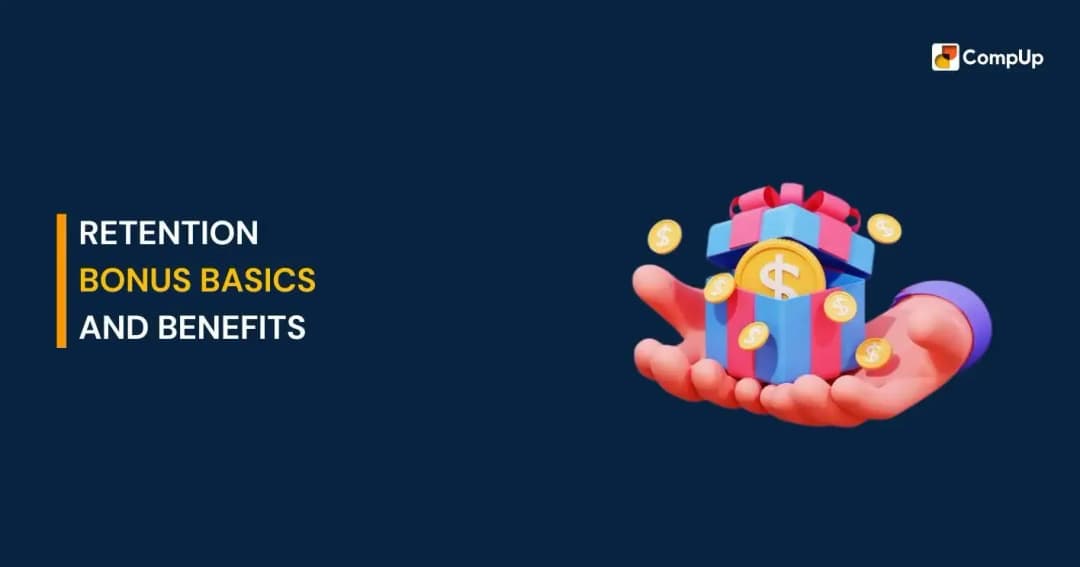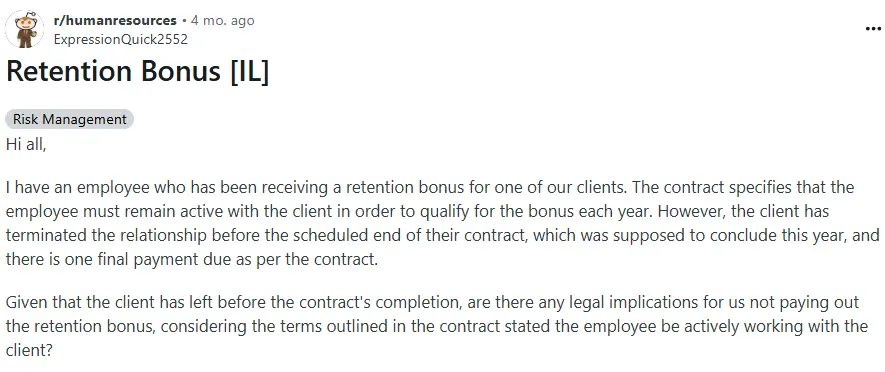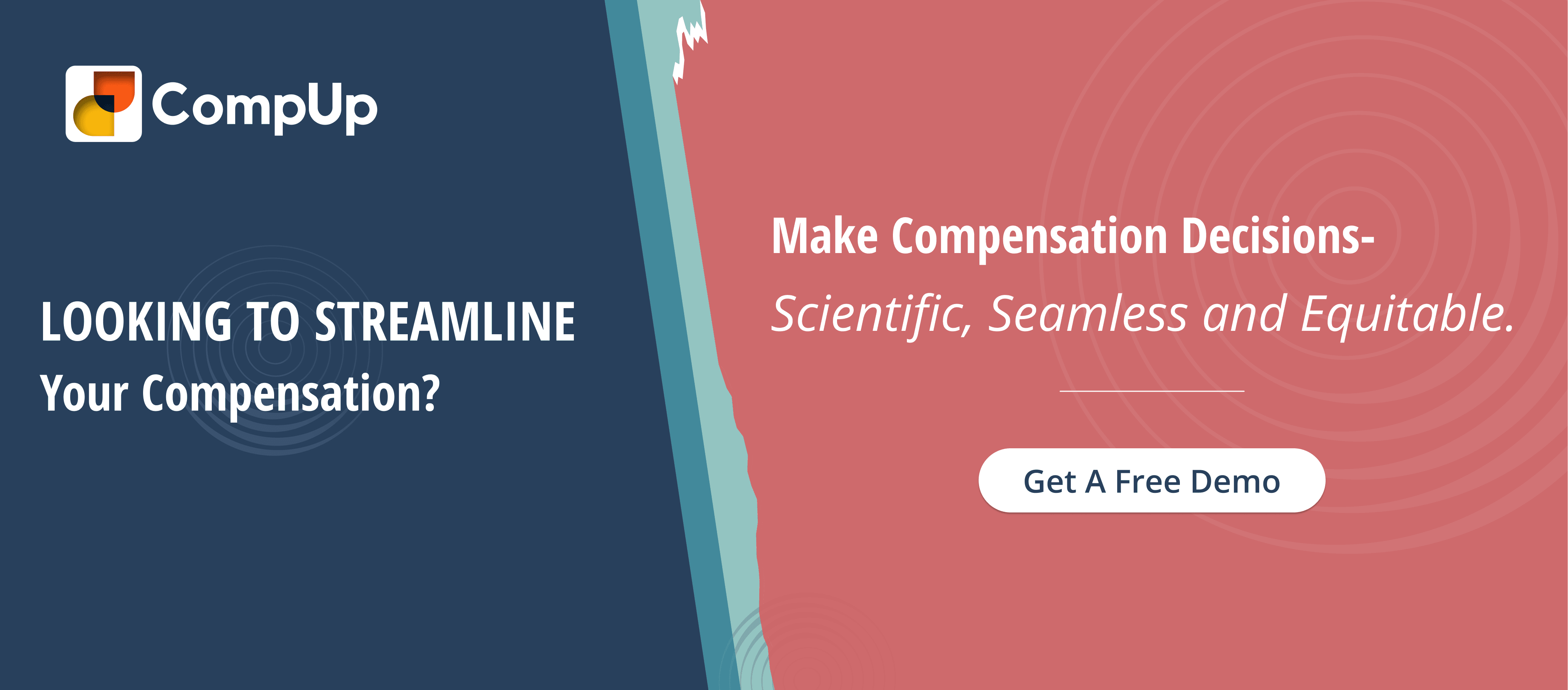
Employee turnover is a costly challenge for businesses, impacting recruitment expenses, productivity, and organizational stability. As per the U.S. Bureau of Labor Statistics, the total separations in March 2025 were 5,183, and in April 2025, they rose to 5,288, highlighting the growing concern.
With talent retention becoming a top priority, companies are turning to employee retention bonuses. This is a powerful tool designed to keep top performers engaged and committed.
Retention bonuses offer financial incentives that reward employees for their loyalty, motivating them to stay with the company for a specified period. But how do these bonuses work, and what tangible benefits do they bring to both employers and employees?
In this article, we will explore what employee retention bonuses are, how they function, and the advantages they offer
An employee retention bonus is a financial incentive offered by employers to encourage key employees to remain with the company for a specified period. Retention bonuses are specifically designed to prevent employees from leaving, especially during critical times, such as company mergers, acquisitions, or periods of high turnover.
Employers usually provide team members with a retention payment when:
These bonuses are often offered to employees who hold vital roles or possess critical skills that the organization cannot afford to lose. They can be paid as a lump sum or in installments, and the payout typically occurs after the employee has fulfilled the retention period.
Now that we understand what employee retention bonuses are, let's examine the components of a retention bonus agreement.

Suggested Watch: This video explains when to offer retention bonuses. It also provides insights on how to effectively implement them during key moments such as organizational changes
A retention bonus agreement is a structured contract that defines the terms, conditions, and obligations for both the employer and employee.. Understanding these terms ensures both employers and employees align on commitments and benefits.
It is essential to understand its key components to ensure transparency and compliance.
Retention bonus incentives are designed with specific eligibility criteria, payout schedules, and conditions that influence their effectiveness. Next, let’s take a closer look at how they function.
Employee retention bonuses are financial incentives offered by employers to encourage employees to stay with the company for a specified period, especially during times of change or transition. These bonuses are typically paid out after the employee meets certain conditions, such as remaining with the company for a set period or completing a key project.
The amount of the bonus can vary depending on the employee's role or salary, and the payment is usually made as a lump sum or in installments. If the employee leaves before fulfilling the requirements, they may forfeit the bonus, making it an effective tool to retain valuable talent and maintain stability during crucial times.
Next, let’s explore the key factors that determine eligibility.
Retention bonuses are carefully allocated to employees whose contributions are vital to a company’s long-term success. These incentives aim to secure talent that plays a key role in business stability, innovation, and growth. Eligibility is determined based on several strategic factors:
Organizations tailor retention bonuses to ensure they effectively retain top talent and maintain operational stability. Next, let’s break down how taxation affects these bonuses.
Retention bonuses are taxable income and are subject to federal, state, and local taxes, just like regular wages. However, they are often classified as supplemental income, which may affect how they are taxed.
Retention bonuses can be tailored to fit different business needs and workforce priorities. Companies use various incentive structures to maximize retention and employee engagement. Now, let’s explore some effective examples in the next section.
Retention bonuses can be structured in various ways to align with business objectives and employee incentives. Here are some common approaches:
Each approach serves a unique purpose, helping companies retain top talent while strengthening long-term workforce stability. The next section discusses these essential components in detail.
An employee retention bonus policy outlines the criteria, structure, and expectations around offering bonuses to employees who stay with the company for a designated period. Here's what should be included in a comprehensive employee retention bonus policy:
Retention bonuses are typically reserved for employees whose contributions are crucial to a company’s success. Eligibility often depends on tenure, role importance, and performance. Long-serving employees, key personnel in leadership or specialized roles, and high performers meeting project milestones or sales goals are more likely to receive bonuses. Organizations tailor these criteria to ensure they incentivize employees who are essential to business continuity and growth.
Companies structure retention bonuses in different ways based on their goals. Some offer a lump sum at the end of the retention period, while others pay in installments over time to maintain engagement. Tiered bonuses reward employees at different milestones, ensuring gradual retention incentives. The structure depends on business needs, financial flexibility, and the desired level of employee commitment.
Retention periods vary depending on the situation. Short-term bonuses (6-12 months) help companies navigate transitions or complete specific projects, while long-term bonuses (1-3 years) support workforce stability during organizational changes. Some bonuses are milestone-based, tied to objectives like completing a merger or launching a product. Employees must fulfill the full duration to receive the bonus, with early departures often leading to forfeiture or partial payout.
Retention bonuses often include clauses ensuring commitment and alignment with business goals. Non-compete agreements prevent employees from joining competitors, while performance milestones may require meeting specific targets. Some bonuses depend on a company's financial health, ensuring they remain viable. These conditions help businesses retain key employees while minimizing risks associated with turnover and unfulfilled obligations.
Retention bonuses are structured to encourage long-term commitment, but their impact extends beyond simply keeping the employees on board. Next, let’s explore how these bonuses provide value to both employers and employees in the next section.
Suggested Read: Creating a Compensation Job Offer Letter: A Template Guide for Every Situation
Employee retention bonuses have become a valuable tool for organizations aiming to retain key talent and maintain stability during uncertain times.
These are a few benefits that a retention bonus offers to both employers and employees, making it a powerful retention strategy.
Retention bonuses provide tangible advantages for businesses beyond simply retaining employees. By offering financial incentives, companies can strengthen workforce stability, improve productivity, and reduce turnover costs. Here are the key benefits for employers:
Retention bonuses provide a structured financial incentive for employees to remain with a company for a specified period. These bonuses mitigate turnover costs, ensure business continuity, and enhance workforce stability. Here are the key advantages:
Retention bonuses work best when strategically timed to address workforce stability and business continuity. Now, let’s look at specific situations where this incentive can be most effective.
Suggested Read: Top 5 Pave Alternatives and Competitors in 2025
Retention bonuses are most effective when they align with business needs and workforce stability goals. Companies typically offer these incentives in key situations where employee retention is critical.
Here are three common scenarios:
When a company undergoes a merger or acquisition, employees often face uncertainty about their future roles. Key personnel, such as department heads and project leads, may be hesitant to stay amid leadership changes and shifting priorities. Offering a retention bonus reassures them that their contributions remain valuable and incentivizes them to remain during the transition, ensuring operational stability and knowledge retention.
Top-performing employees are often approached by competitors with lucrative offers. Losing them can disrupt productivity, morale, and long-term growth. A well-timed retention bonus signals that the company values their contributions and is willing to invest in their continued success. This can be especially effective for sales leaders, engineers, or executives who drive innovation and revenue.
Some projects are simply too important to risk turnover. This can be a major product launch, a system overhaul, or a regulatory compliance initiative. When key employees leave before completion, deadlines get pushed, expertise is lost, and costs rise. A retention bonus encourages them to stay until the project reaches its final milestone, ensuring consistency and successful execution.
A well-designed retention bonus program is a powerful tool for securing top talent and driving workforce stability. By using CompUp, businesses can refine retention strategies, align incentives with organizational goals, and ensure long-term employee engagement.
Next, let’s explore how CompUp enhances retention efforts.

Suggested Read: In this thread, you can learn more about the implications of not paying a retention bonus when the contract terms specify that the employee must remain active with the client.
CompUp offers a range of features designed to help businesses optimize their employee retention strategies. By aligning compensation with performance, improving transparency, and streamlining HR processes, CompUp makes sure that your organization remains competitive while improving employee satisfaction and engagement.
Here’s how CompUp can elevate your employee retention strategy:
CompUp’s Performance-Based Rewards ensures that compensation is directly linked to employee performance. By offering tailored rewards based on individual achievements, employees feel valued, which boosts motivation and long-term commitment.
With CompUp’s Pay Transparency feature, employees gain clear visibility into their compensation structure. This openness builds trust, aligns expectations, and reduces dissatisfaction, helping retain top talent.
CompUp’s Compensation Management feature allows organizations to create customized compensation plans for different employee groups. This flexibility ensures that compensation strategies are both competitive and equitable, which enhances employee loyalty and retention.
CompUp’s Real-Time Analytics gives you insights into employee satisfaction and compensation trends. By tracking compensation against industry benchmarks, organizations can ensure they stay competitive in attracting and retaining talent.
CompUp includes tools for collecting feedback and measuring employee engagement. By acting on this feedback, organizations can address concerns early and improve overall workplace satisfaction, directly impacting retention rates.
With CompUp’s Digital Onboarding, new hires have a smooth and engaging entry into the company, improving their initial experience and cultivating long-term commitment.
By incorporating CompUp into your employee retention strategy, you create a data-driven, transparent, and fair environment where employees feel recognized, valued, and motivated to stay with your organization.
Suggested Read: Top PayScale Alternatives and Competitors in 2025
Employee retention bonuses are a powerful tool for organizations looking to retain key talent, boost morale, and reduce turnover costs. Creating a clear and rewarding bonus program can greatly boost employee loyalty and maintain a dedicated workforce during critical moments.
However, the effectiveness of retention bonuses can be greatly enhanced with the right tools. CompUp is a comprehensive compensation management platform that can help you optimize your retention strategy. The tool employs real-time compensation benchmarking, data-driven insights, and streamlined bonus administration to deliver results.
Want to learn more? Schedule a demo with CompUp to see how our platform can optimize your compensation processes.
1. How are retention bonuses paid out?
Retention bonuses are typically paid as a lump sum at the end of the retention period or in installments over time. Payment structure varies depending on the company’s policy and the terms agreed upon with the employee.
2. What is the red flag in a retention bonus?
A red flag could be a retention bonus tied to conditions that are unrealistic or impossible to meet, such as unclear performance expectations or overly short retention periods. These terms may indicate poor planning or a lack of transparency.
3. How is the retention bonus calculated?
Retention bonuses are typically calculated based on factors like the employee’s role, tenure, and the company’s financial health. Employers may also consider the employee’s performance and the overall business needs when determining the bonus amount.

Co-founder & Head of Product
Anshul Mishra, Co-founder and Head of Product at CompUp, blends technology and total rewards to create smart, user-friendly solutions. He focuses on building data-driven tools that help companies design fair and effective compensation strategies, making complex processes simpler and more impactful.
Revolutionizing Pay Strategies: Don't Miss Our Latest Blogs on Compensation Benchmarking